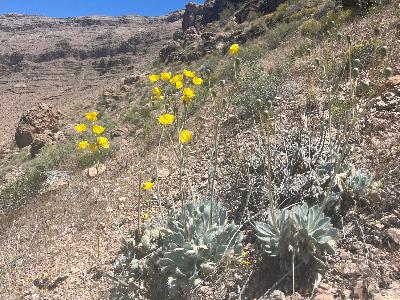Discover Earth Notes
Earth Notes

Earth Notes
Author: KNAU Arizona Public Radio
Subscribed: 2Played: 3Subscribe
Share
Description
Earth Notes, KNAU’s weekly environmental series, explores the Colorado Plateau by telling stories of the intricate relationships between environmental issues and our daily lives. Rooted in science and wrapped in human interest, the two-minute-long segments encourage listeners to think of themselves as part of the solution to environmental problems.
92 Episodes
Reverse
Woodlands in western North America are changing fast. The Mexican Spotted Owl is an emblematic, threatened species that feels the effects of these transitions.
Sometimes, something we think of as waste can be made valuable again. Consider biochar.
The 64-mile steam train service from Williams to the South Rim of the Grand Canyon began in 1901, when a ticket cost $3.95. An updated, eco-friendly version is still in use today.
New research in New Mexico shows that black bears thrive in forests renewed by fire — especially when it means more berries, acorns and cover.
A creature inhabits northern Arizona that has every appearance of a diminutive rhinoceros.
After sunset, the eerie choruses of coyotes are among the most iconic sounds of the American West.
Archaeologists are using advances in technology to analyze fragments of turquoise found at the ancestral Hopi villages of Homol’ovi. They're working with the Hopi Cultural Preservation Office to reveal the story of the origins of these iconic blue-green stones.
Fire lookout towers didn't exist in Arizona in the early 1900s. Instead, firefighters use tall ponderosa pines near mountain tops or other strategic viewpoints.
The Four Corners potato fed people 10,000 years ago and now the ancient, nutrient-packed spud is drawing new interest.
The sandstone pinnacles, arches and natural bridges of the Colorado Plateau may seem like static, silent parts of the landscape. But researchers at the University of Utah have tuned in to a very different reality.
No one expects to see trees that look like jewels in the high desert of Arizona. But that’s exactly what visitors find in the Petrified Forest National Park – ancient logs preserved for millennia by a process that transfigured them into rare and beautiful stones.
The mighty saguaro cactus is both a cultural and ecological icon.
If you find a bird feather – how can you tell which species it belongs to? An ornithologist in the Forensic Laboratory at the U.S. Fish and Wildlife Service pondered this question.
The American pika is a small mammal that inhabits the highest elevations in the western mountains. Members of the rabbit family, pikas are approximately 7 inches long, characterized by outsized ears, short legs and a chunky, furry body.
CO₂ levels topped a record high of 430 ppm in May. It’s bad news for ecosystems, but could mean wetter summers for some regions.
Rain comes when water molecules in the atmosphere clump together to form ice crystals or water droplets that are heavy enough to fall to the ground. But what causes that clumping to happen?
Monsoon season is underway. Meteorologists have identified a pattern that brings hope to those longing for a lush summer this year.
The Las Vegas bearpoppy is incredibly rare and found in scattered locations in northwestern Arizona and near Las Vegas.
Wet meadows are small but crucial landscape elements among the pines above the Mogollon Rim. They benefit plant diversity, wildlife and watershed health.
Across the vast landscapes of the Colorado Plateau, one resilient plant has profoundly shaped people and land for many centuries: Indian ricegrass.





